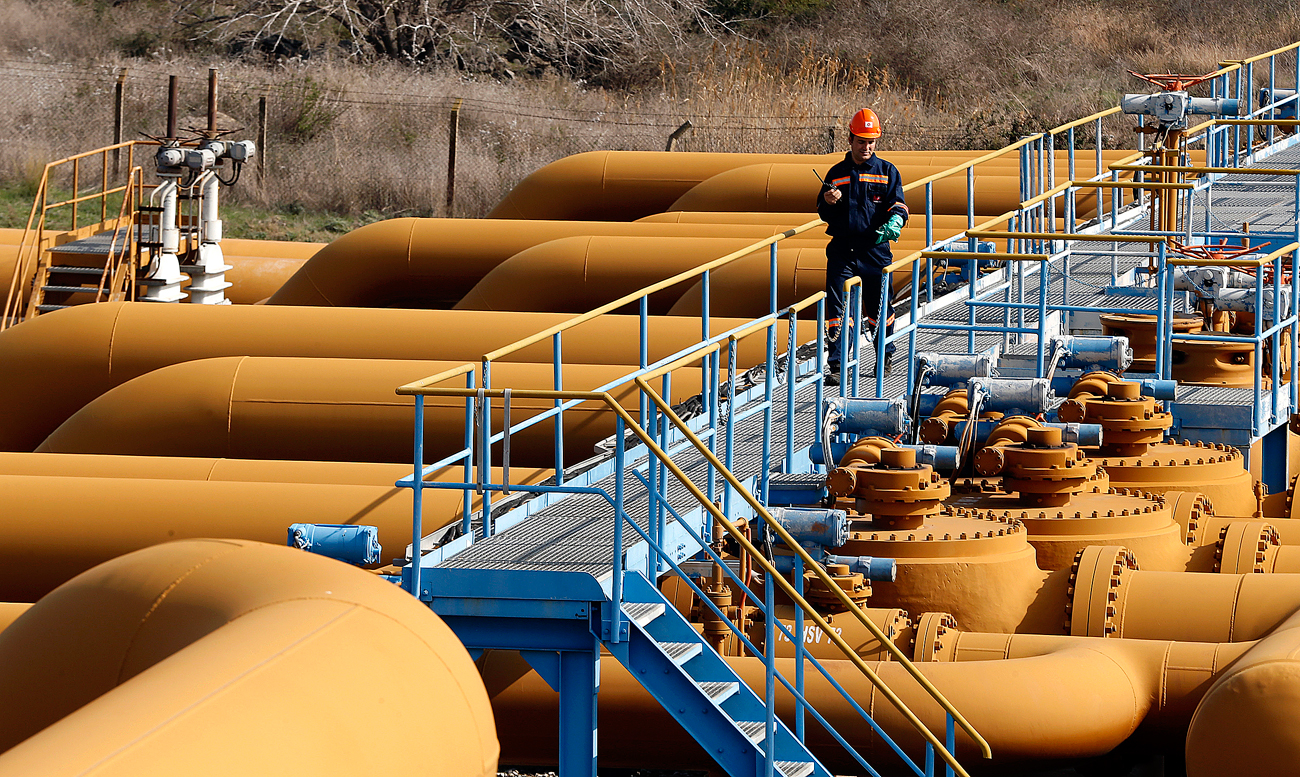
The pipeline's capacity has been reduced by half to two strings, totalling 32 billion cubic meters of gas.
ReutersBotas, Turkey’s petroleum pipeline corporation, has agreed to collaborate with Russia's Gazprom to build the Turkish Stream gas pipeline under the Black Sea from Russia to Turkey in exchange for a discounted price on gas.
The agreement was signed on October 10 by the energy ministers of Russia and Turkey, Alexander Novak and Berat Albayrak, the Kommersant business newspaper reported.
According to the agreement, the pipeline's capacity has been reduced by half to two strings, totalling 32 billion cubic meters of gas. However, the size of discounts for Turkish buyers has not been stated in the agreement.
Russian authorities were initially planning to build the South Stream gas pipeline under the Black Sea from Russia to Central Europe via Bulgaria, but the project encountered resistance from the European Commission. According to the Third Energy Package, the same party may not be both a gas supplier and a network owner in the European Union.
In December 2014, therefore, Russian President Vladimir Putin announced the redirection of the gas pipeline toward Turkey and the launch of the Turkish Stream. However, the project was shelved in late 2015 after the Turkish air force shot down a Russian military aircraft along the Syrian border.
What follows from the new agreement is that one string of the gas pipeline is intended to supply gas to the Turkish market while the other will supply the European market, explained Yury Borovsky, associate professor at the Moscow State Institute of International Relations.
Borovsky feels this is an intermediate consensus option that can suit everyone.
"For Russia, this project is beneficial and important because it allows it to increase gas supplies not only to Turkey but also to the European Union," Borovsky said.
Gazprom plans to use the first string to transfer gas supplies, which currently come to Turkey from Bulgaria, via the Trans-Balkan pipeline. This pipeline runs through Ukraine to Bulgaria, Romania and the Balkans.
If the new project is fully implemented, it will effectively lead to a large-scale replacement of Ukrainian transit, said Ivan Kapitonov, associate professor at the Russian Presidential Academy of National Economy and Public Administration. The Ukrainian gas transportation system would stand to lose 14 to 15 billion cubic metres of gas per year, which is currently transported via Ukraine to Turkey.
"For now, the parties will focus on the first phase; the construction of one string with a capacity of 16 billion cubic metres," said Georgy Vashchenko, head of Russian stock market operations at Moscow investment company Freedom Finance. According to Vashchenko, the second part of the project is in question, and it is necessary to conclude a separate agreement for it to become workable.
"The Turkish Stream project itself can be divided into two completely different projects," said Sergei Khestanov, macroeconomic adviser to the head of the Otkrytie Brokerage. "The first aims to meet gas demand in the western part of Turkey, which now gets gas from Ukraine through a complicated route."
According to Khestanov, the remaining strings will be focused on further supplies of Russian natural gas to Western Europe. Turkey is not interested in the development of this part of the project. If only one string is eventually built, the project will be beneficial to Turkey, Khestanov said.
Kapitonov said, once the project is implemented, “Russia will strengthen the diversification of its gas transit routes and increase its energy security,” although the question of recovering costs remained open.
Much more promising is the proposal to expand the Nord Stream gas pipeline under the Baltic Sea to Germany, he said. The project involves building a gas pipeline with a capacity of 55 billion cubic metres per year. However, the European Commission has not yet approved the project.
All rights reserved by Rossiyskaya Gazeta.
Subscribe
to our newsletter!
Get the week's best stories straight to your inbox